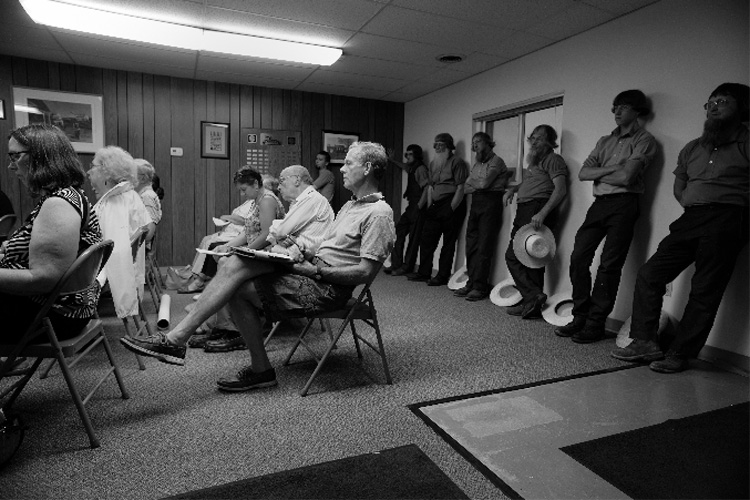New Photography Exhibit Explores Impacts of the Fracking Boom
The story of the fracking boom in Pennsylvania and nearby states runs as an almost continuous narrative in the region’s press. But covering the blow-by-blow of new drilling sites, protests, lawsuits and regulations is just one way to look at how fracking has changed the region.
Back when unconventional natural gas drilling started gaining momentum, a group of photographers set out to gather a more personal perspective—by using photography to document the lives and landscapes that were being transformed by the drilling boom. The Marcellus Shale Documentary Project has collected hundreds of images since, many of which are included in a new exhibition titled “An Expanded View.” Co-curator Laura Domencic says a series by photographer Noah Addis reveals a sense of frustration in the subjects.
“They’re beautifully shot—the detail is incredible,” she says. “But they’re pretty haunting. They’ve been trying to tell these stories. I think they’ve had these conversations with people, and yet there’s not any response.”
LISTEN: “Your Environment Update for June 15, 2016”
Domencic says these and other photographs in the show help tell stories about people’s experiences with fracking that wouldn’t otherwise be heard.
“So oftentimes you hear history books are written by the winners of wars, or that sort of thing. And there is so much more to what’s going on than just what you hear the most of.”
The Marcellus Shale Documentary Project is also hosting a public forum with some of the artists on Thursday, June 16. The event starts at 6 p.m at the Pittsburgh Center for the Arts (PCA). Admission is free for PCA members; $5 for non-members. You can find more details and RSVP here.
The Marcellus Shale Documentary Project is supported in part by the Pittsburgh Foundation and the Heinz Endowments, which also support The Allegheny Front.
Reporting by Kara Holsopple
Landowners and Industry Battle Over New Pipeline Routes
The natural gas boom in Pennsylvania and surrounding states has brought a boom of another sort: A rush to build a pipeline system that can carry all that gas from the region to places around the country.
In recent months, the industry has even resorted to using eminent domain to acquire rights-of-way from private landowners. But though it’s often a David-and-Goliath battle, disputes over pipeline routes don’t always go the industry’s way.
Recently, activists held something of a victory party at Bluebird Farm in southeastern Ohio to celebrate getting Kinder Morgan, a large pipeline company, to re-route its proposed ethane pipeline around the farm, instead of through it. But Mick Luber, the farm’s owner, wasn’t celebrating.
“As long as these guys are still doing this stuff, what is the victory?” Luber says. “You can’t stop the vigilance. People have got to keep standing in their way.”
Luber has been a staple at farm markets around Pittsburgh and Wheeling for years. He grows tomatoes, greens and fava beans on his 65-acre farm in Cadiz, Ohio. He says digging a pipeline through his fields would destroy the soil he’s built up over decades, and so he fought the company in court.
Luber says oil and gas development has surrounded his quiet home over the past few years. Near the edge of his property line, where Marathon Oil is currently installing a pipeline, the greenery abruptly turns to bare ground.
“This was all woods,” he says. “This is what you end up with.”
Meanwhile, the proposed Kinder Morgan line is still waiting for federal and state approvals. The company says it’s negotiating with more than 700 landowners along the route, though Kinder Morgan says it can’t reroute for every concern.
Reporting by Julie Grant

